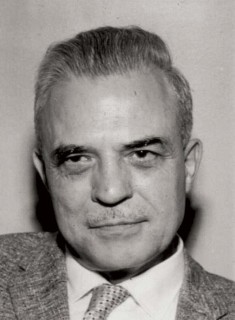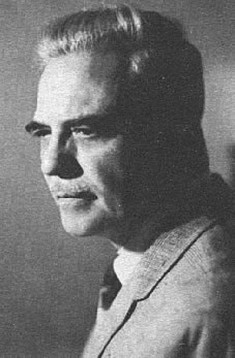| Milton Erickson | |
|---|---|
 |
|
| Psychiatrist | |
| Born | Dec. 5, 1901 Aurum, Nevada |
| Died | Mar, 25, 1980 Phoenix, Arizona |
| Nationality | Psychiatrist |
Milton Erickson was a distinguished American psychiatrist who specialized in family therapy and medical hypnosis. He is the famed hypnotherapist who revolutionized the field of psychotherapy. He was the founder of American Society for Clinical Hypnosis. His influence on hypnotherapy is huge, and today, many practicing hypnotherapists are using his approach in some form or other.
Early Life
Milton Erickson was born in Aurum, Nevada, on Dec 5, 1901. He was the son of Albert and Clara Erickson. When Milton was very young (five years old), the family moved to Lowell, Wisconsin, and started farming on about 80 acres of land. Milton had eight siblings, a brother and seven sisters.
As a child, Milton had a slow development and he was both color blind and dyslexic. He overcame his dyslexia through a series of auto-hypnotic and creative moments. As a young boy, Milton wanted to be like his father and was inspired to become a farmer. However, he contracted polio at the young age of 17, which left him severely paralyzed. In fact, a few doctors believed that he would die. However, a miraculous auto-hypnotic moment let Milton survive the severe polio attack.
Education and Professional Life
After recovering over a span of time, Milton went to the University of Wisconsin and earned a MA in psychology. After graduating, he worked as a psychiatrist in several hospitals throughout the United States.
In 1948, Milton was appointed the Clinical director of Arizona State Hospital. He retired from that role a year later to pursue his passion for writing, teaching, and private practice. In 1950, anthropologist George Bateson involved Milton as a consultant on his extensive research work on communication.
Later, Milton had to suffer through another bout of polio that left him in a wheelchair for the rest of his life. Milton died in 1980.
Work and Contributions to Psychology
Milton Erickson revolutionized the practice of hypnosis. He first became aware of hypnosis as an adolescent and later, after completing his graduation, he started utilizing its applications. Erickson’s practice combined his skills with knowledge of medicine, psychotherapy, psychiatry and hypnosis.
 Based on his experiments and observations, Erickson challenged the traditional concept of hypnosis, which was based on the fact that client is a passive recipient. He believed that the patient should be an active collaborator in the process of introspective healing. His theories and approaches came into limelight with the publication of The Uncommon Therapy by Jay Haley in 1973.
Based on his experiments and observations, Erickson challenged the traditional concept of hypnosis, which was based on the fact that client is a passive recipient. He believed that the patient should be an active collaborator in the process of introspective healing. His theories and approaches came into limelight with the publication of The Uncommon Therapy by Jay Haley in 1973.
Erickson also believed in the power of unconscious mind, and the trance state that can have a strong hypnotic influence on mind and body. According to Erickson, every person has a healthy, powerful core, and that hypnosis is a power tool in allowing this self to guide us again. He believed that most of our limitations are self-imposed, the barriers put up by the conscious mind. He believed that the job of the therapist is to help the subject re-establish his connection with his inner resources; and to balance between the conscious and the unconscious mind.
Approach towards Hypnosis
Milton created the Utilization Approach towards hypnosis that basically uses the behavior exhibited by the client to induce and deepen a trance. When working with patients, rather than trying to find a lot of background history, Erickson’s priority was to establish rapport. During his conversation with the patient, Erickson would focus on patient’s body language, his facial expressions, and his responses to the therapist’s remarks.
Another well-known theory of Erickson is the handshake induction. The induction is done by the hypnotist while shaking hands with the patient, and then interrupting the flow of the handshake in some way. This interruption can create a non-verbal trance in the subject, which may be utilized by the hypnotist. He tailored every induction to the client’s individual needs and perpetual bias.
Books and Publications
Some of his famous books include The Practical Application of Mental and Dental Hypnosis, Time Distortion in Hypnosis, Hypnotic Realities and Hypnotherapy: An Exploratory Casebook.
The transcriptions of his seminars and lectures can be found in the following books: Mind-Body Communication in Hypnosis, Central Themes and Principles of Ericksonian Therapy and The February Man: Evolving Consciousness and Identity in Hypnotherapy.